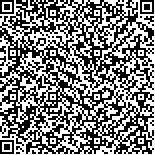Archive > Volume 41 Issue 3 > 2015,41(3):272-285. DOI:10.7519/j.issn.1000-0526.2015.03.002 Prev Next
Numerical Simulation of Aerosol Effects on Cloud and Precipitation Using GRAPES Model
- Article
- Figures
- Metrics
- Preview PDF
- Reference
- Related
- Cited by
- Materials
Abstract:
A parameterization approach of cloud droplet activation is introduced into the original two moment microphysical schemes coupled with GRAPES model. Two precipitation processes are simulated and two experiments with different aerosol concentrations are conducted for both of them. The results show that when aerosol concentration increases, the biggest change of microphysical characteristics is the apparent increase of cloud water content. This is because of the suppressed conversion from cloud droplets to rain drops when more aerosols nucleate into more but smaller cloud droplets, which results in less efficient warm rain processes. On the other hand, with more cloud water left in the air, ice phase particles, especially snow and graupel, can grow through collecting more cloud water and increased snow can also be collected by graupel. Melted snow and graupel eventually produce more rain. Meanwhile, more latent heat will be released with the increase of ice particles, which can invigorate cloud updrafts and further promote rain development. In the simulation region, aerosol effect on precipitation is spatially non uniform. In the region where warm clouds are thick, suppressed warm rain process is the main factor affecting precipitation and surface rainfall is reduced. In spite of this where warm cloud is thin and cold cloud is relatively thicker, cold rain process enhancement is dominant and surface rainfall is increased. Aerosol effects on precipitation is also temporally non uniform because the distributions of warm cloud and cold cloud change during the development of clouds and precipitation.
Keywords:
Project Supported:
Clc Number:


Mobile website









